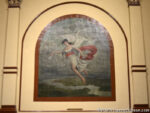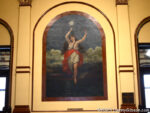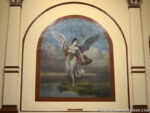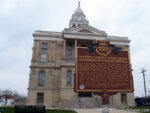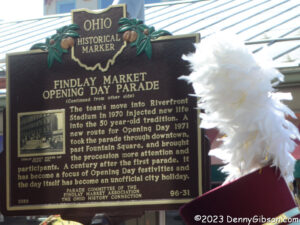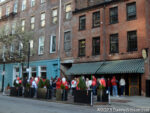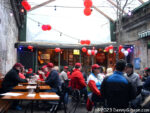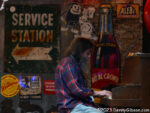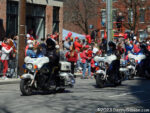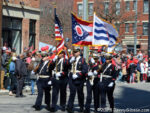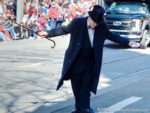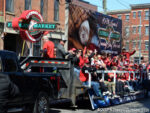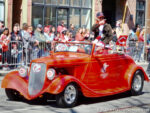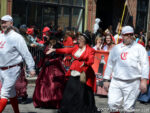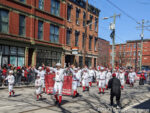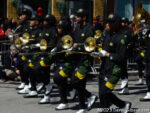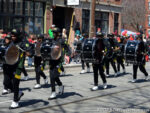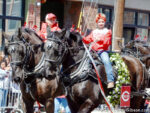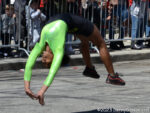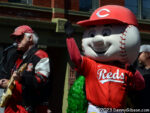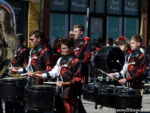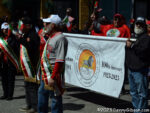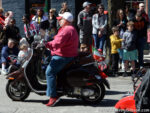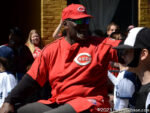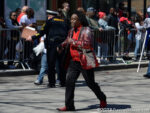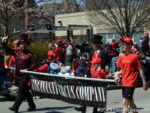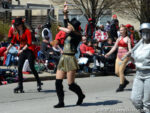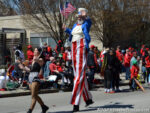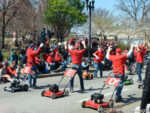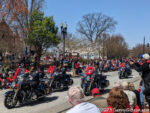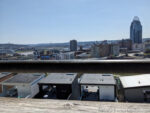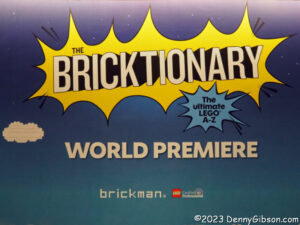 I’ve never had Legos. I’ve had Tinker Toys and Lincoln Logs and even a hand-me-down Erector Set but no Legos. Both my Tinker Toys and my Lincoln Logs were made out of real wood but I had no Legos made out of anything. If having wooden Tinker Toys and Lincoln Logs isn’t sufficiently impressive, consider that I also had a Mr. Potato Head that did not come with a plastic body but required a real potato and my family’s Clue Game had a real rope (string) and lead pipe. Knowing all that should make it abundantly clear why I had no Legos. My childhood occurred at a time so far removed from the present that Legos had not yet been invented.
I’ve never had Legos. I’ve had Tinker Toys and Lincoln Logs and even a hand-me-down Erector Set but no Legos. Both my Tinker Toys and my Lincoln Logs were made out of real wood but I had no Legos made out of anything. If having wooden Tinker Toys and Lincoln Logs isn’t sufficiently impressive, consider that I also had a Mr. Potato Head that did not come with a plastic body but required a real potato and my family’s Clue Game had a real rope (string) and lead pipe. Knowing all that should make it abundantly clear why I had no Legos. My childhood occurred at a time so far removed from the present that Legos had not yet been invented.
The Lego company and something called “Automatic Binding Bricks” did exist during my childhood but it would be the late 1950s before the sort of plastic brick we now know would appear. Initially seen only in Lego’s home country of Denmark, they would not show up in the USA until 1961. That was a little too late for me but Legos were part of my sons’ toy collections. They were not a big part although they were around enough for me to experience stepping on them barefoot in the dark. The experience is certainly a memorable one but the pain level does not, in my opinion, equal that of stepping on a Barbie high heel under similar circumstances. Legos really took hold a generation later and at least one grandson dived pretty deep into the phenomenon.
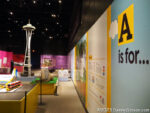
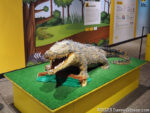 Others took even deeper dives to become LEGO® Certified Professionals. One of those professionals, Ryan “The Brickman” McNaught, is responsible for “Bricktionary: The ultimate LEGO® A-Z” exhibit at the Cincinnati Museum Center that I visited Friday. It is based on a book of the same name. Learning that A is for alligator is a good start.
Others took even deeper dives to become LEGO® Certified Professionals. One of those professionals, Ryan “The Brickman” McNaught, is responsible for “Bricktionary: The ultimate LEGO® A-Z” exhibit at the Cincinnati Museum Center that I visited Friday. It is based on a book of the same name. Learning that A is for alligator is a good start.

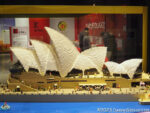 The Seattle Space Needle just beyond the alligator had me stumped until I figured out it was part of the ‘B’ section. B is for buildings like the Space Needle and the Sydney Opera House.
The Seattle Space Needle just beyond the alligator had me stumped until I figured out it was part of the ‘B’ section. B is for buildings like the Space Needle and the Sydney Opera House.
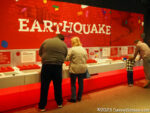
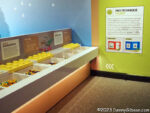 There are several hands-on stations in the exhibit where lots of Lego elements are available to experiment with. At the earthquake station, visitor-built structures can be tested for stability on adjustable shaking platforms.
There are several hands-on stations in the exhibit where lots of Lego elements are available to experiment with. At the earthquake station, visitor-built structures can be tested for stability on adjustable shaking platforms.
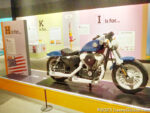
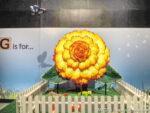 It took me a second to realize that G is for garden but knowing that H is for Harley Davidson was immediate. I was pretty impressed with the spokes made out of bricks and I thought the giant flower so cool that I used a shot of just the bloom for an Instagram/Facebook post.
It took me a second to realize that G is for garden but knowing that H is for Harley Davidson was immediate. I was pretty impressed with the spokes made out of bricks and I thought the giant flower so cool that I used a shot of just the bloom for an Instagram/Facebook post.
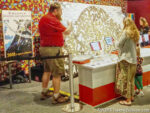
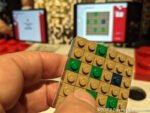
 I found this hands-on station extra interesting and spent some time talking with the two people operating it. In the end, I participated myself. It has some similarities with assembling a jigsaw puzzle except all of the “puzzling” has already been done. Screens display random sections of the big image for visitors to copy onto 6×6 panels. The pattern I followed to assemble my section is here. Completed sections are placed in their proper position by one of the station workers. The image being assembled here is a frontal view of the Museum Center. There are others including an awesome view of the Grand Canyon. It takes a number of days to complete an image but several have already been assembled and disassembled since the exhibit opened in March. There is talk of the Museum Center image remaining in Cincinnati when the exhibit moves on and I briefly had visions of my little panel becoming part of a permanent museum display. I quickly realized, however, that the Museum Center, the Grand Canyon, and every other image will likely rise and fall many more times before the exhibit closes in August.
I found this hands-on station extra interesting and spent some time talking with the two people operating it. In the end, I participated myself. It has some similarities with assembling a jigsaw puzzle except all of the “puzzling” has already been done. Screens display random sections of the big image for visitors to copy onto 6×6 panels. The pattern I followed to assemble my section is here. Completed sections are placed in their proper position by one of the station workers. The image being assembled here is a frontal view of the Museum Center. There are others including an awesome view of the Grand Canyon. It takes a number of days to complete an image but several have already been assembled and disassembled since the exhibit opened in March. There is talk of the Museum Center image remaining in Cincinnati when the exhibit moves on and I briefly had visions of my little panel becoming part of a permanent museum display. I quickly realized, however, that the Museum Center, the Grand Canyon, and every other image will likely rise and fall many more times before the exhibit closes in August.
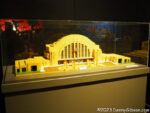 This Lego model of the Museum Center, a.k.a., Union Terminal, sits at the line separating the big exhibit from the obligatory gift shop. One of the items available in the shop is the Bricktionary book mentioned earlier. I should have checked to see if it gives instructions for building all 150+ models in the exhibit. If so, then anyone could duplicate the exhibit with a little free time and about 3,000,000 Legos. If only my condo was a skosh bigger.
This Lego model of the Museum Center, a.k.a., Union Terminal, sits at the line separating the big exhibit from the obligatory gift shop. One of the items available in the shop is the Bricktionary book mentioned earlier. I should have checked to see if it gives instructions for building all 150+ models in the exhibit. If so, then anyone could duplicate the exhibit with a little free time and about 3,000,000 Legos. If only my condo was a skosh bigger.







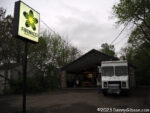

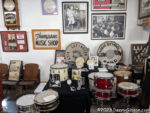
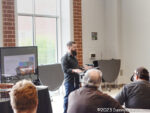
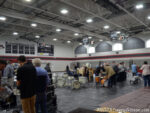
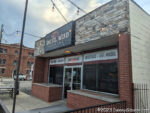
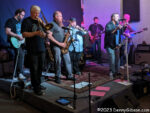
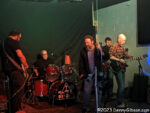
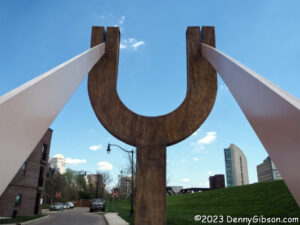
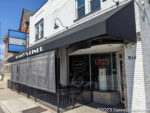
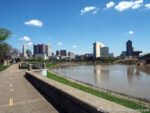
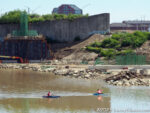
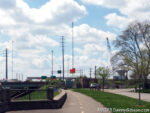
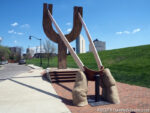
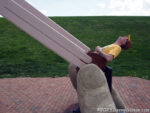
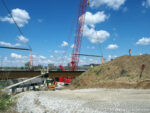
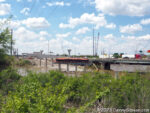
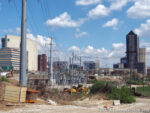
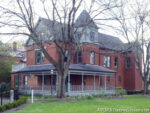
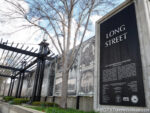
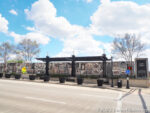

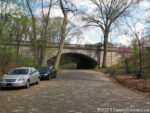
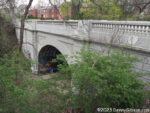
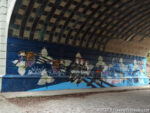
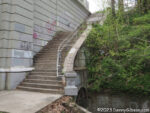

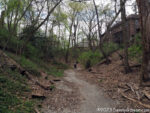
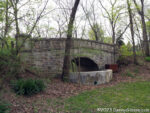
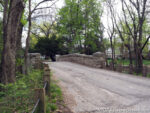
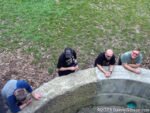
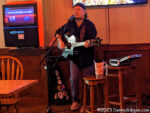
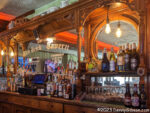

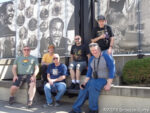
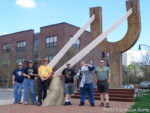
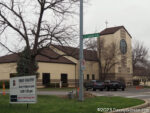



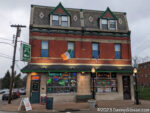

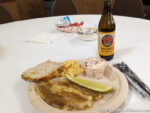
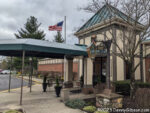
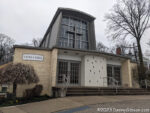


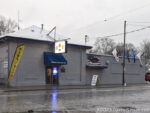
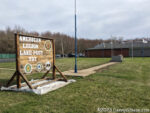

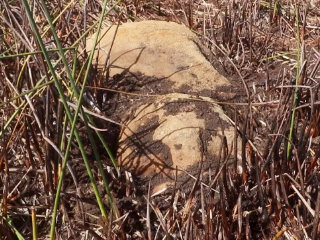
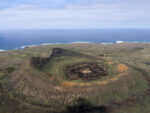
 Many will find real joy in munching on this year’s new Dr. Pepper-flavored Peeps and maybe even washing them down with their namesake beverage. It’s definitely a sweet image. But that won’t be happening for Easter Islanders. The DP Peeps are a Walmart exclusive and Walmart has yet to reach the island. Hmmm. Perhaps that, and not the moai discovery, is actually the bright spot in this story.
Many will find real joy in munching on this year’s new Dr. Pepper-flavored Peeps and maybe even washing them down with their namesake beverage. It’s definitely a sweet image. But that won’t be happening for Easter Islanders. The DP Peeps are a Walmart exclusive and Walmart has yet to reach the island. Hmmm. Perhaps that, and not the moai discovery, is actually the bright spot in this story.
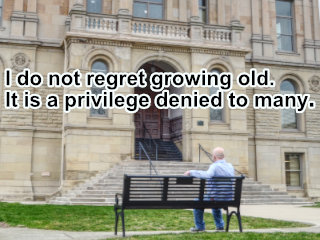 For the second consecutive year, I’ve created a post specifically for my birthday. I didn’t expect to. I did it last year to note a milestone in age and a change in appearance. I’m doing it this year primarily to record some thoughts. I ended
For the second consecutive year, I’ve created a post specifically for my birthday. I didn’t expect to. I did it last year to note a milestone in age and a change in appearance. I’m doing it this year primarily to record some thoughts. I ended 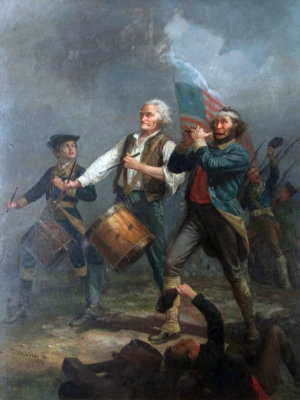 The day before John turned seventy-six, he commented about having that number of trombonists serenade him for his birthday. On the day. I shared a Youtube clip of The Music Man‘s signature song.
The day before John turned seventy-six, he commented about having that number of trombonists serenade him for his birthday. On the day. I shared a Youtube clip of The Music Man‘s signature song.